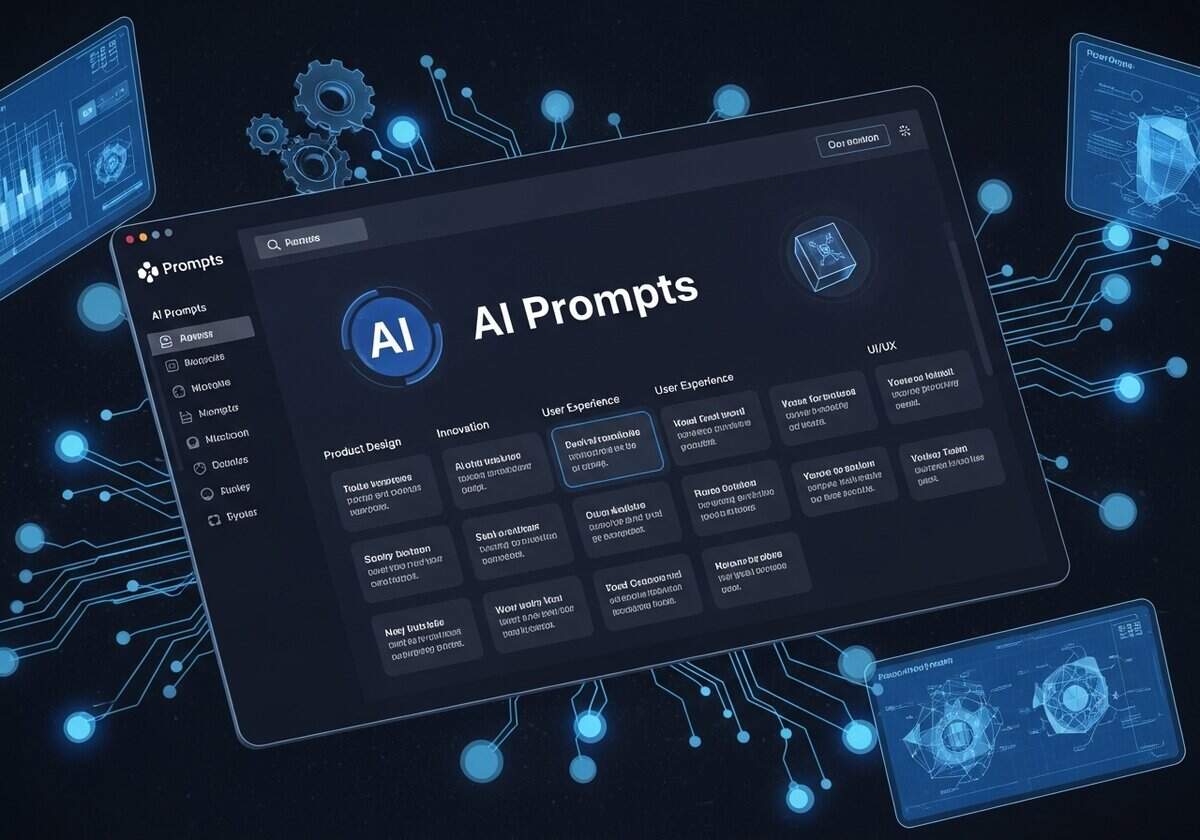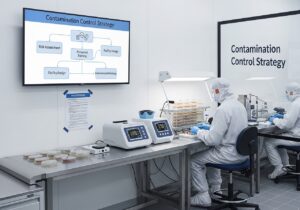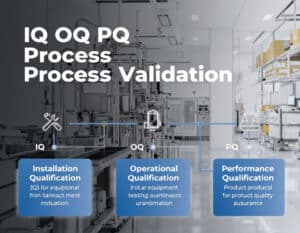Simply the Biggest AI Prompts Directory Specialized in Product Design and Innovation

Welcome to the world’s largest AI prompts directory dedicated to advanced تصميم المنتج, engineering, science, innovation, quality, and التصنيع. While online AI tools are rapidly transforming the engineering landscape by augmenting human capabilities, their true power is unlocked through precise and expertly crafted instructions. This comprehensive directory provides you a collection of such prompts, enabling you to command AI systems that can process vast amounts of data, identify complex patterns, and generate novel solutions far more efficiently than traditional methods.
Discover and fine tune the exact prompts needed to leverage online AI agents for optimizing your designs for peak performance and manufacturability, accelerating complex simulations, accurately predicting material properties, and automating a diverse range of critical analytical tasks.
The advanced search filters allow fast access to this extensive directory and cover the full spectrum of modern engineering.
نظرًا لموارد الخادم والوقت، فإن المطالبات نفسها محجوزة للأعضاء المسجلين فقط، ولا تظهر أدناه إذا لم تكن مسجلاً. يمكنك التسجيل، 100% مجاناً:
- تحليل السبب الجذري
- الهندسة الكهربائية
موجه الذكاء الاصطناعي إلى IGBT Failure Contributing Factors
- تحليل الفشل, تحليل نمط الفشل والآثار (FMEA), الصيانة, خوارزميات الصيانة التنبؤية, تحسين العمليات, مراقبة الجودة, إدارة الجودة, تحليل المخاطر, إدارة المخاطر
Identifies potential contributing factors to an Insulated Gate Bipolar Transistor (IGBT) module failure in a Variable Frequency Drive (VFD) based on operational data and failure mode. This aids in preventing future failures.
المخرجات:
- النص
- لا يتطلب إنترنت مباشر
- Fields: {vfd_model_and_application} {igbt_failure_mode_description} {operational_data_at_failure_csv_description}
- Best for: Maintenance engineers and power electronics specialists investigating IGBT failures in VFDs who need to identify a comprehensive set of potential contributing factors based on operational data and failure characteristics.
- تحليل السبب الجذري
- الهندسة الكهربائية
موجه الذكاء الاصطناعي إلى SCADA Failure 5 Whys Analysis
- 5 لماذا, التحسين المستمر, تحليل الفشل, تقنيات حل المشكلات, تحسين العمليات, مراقبة الجودة, إدارة الجودة, إدارة المخاطر, تحليل السبب الجذري
Formulates a ‘5 Whys’ analysis to drill down to the root cause of a communication failure in a SCADA system. This structured questioning helps uncover deeper systemic issues beyond initial symptoms.
المخرجات:
- تخفيض السعر
- لا يتطلب إنترنت مباشر
- Fields: {problem_statement_SCADA_failure} {initial_symptom_observed}
- Best for: SCADA engineers and technicians performing root cause analysis of communication failures or other issues who need a structured questioning technique like '5 Whys' to delve deeper than surface symptoms.
- تحليل السبب الجذري
- الهندسة الكهربائية
موجه الذكاء الاصطناعي إلى Amplifier Noise Root Causes
- Design Analysis, الهندسة الكهربائية, الإلكترونيات, تحليل السبب الجذري, معالجة الإشارات
Proposes potential root causes for unexpected noise in an amplifier circuit based on its design and noise characteristics. This aids in troubleshooting and diagnosing issues in electronic circuits.
المخرجات:
- النص
- لا يتطلب إنترنت مباشر
- Fields: {amplifier_schematic_key_components_and_topology} {noise_characteristics_description} {recent_changes_to_circuit_or_environment}
- Best for: Electronics engineers and technicians troubleshooting unexpected noise issues in amplifier circuits who need a comprehensive list of potential root causes to guide their diagnostic process.
- تحليل السبب الجذري
- الهندسة الكهربائية
موجه الذكاء الاصطناعي إلى Fishbone Diagram Power Outage RCA
- التحسين المستمر, الهندسة الكهربائية, الأثر البيئي, تحليل الفشل, الصيانة, تقنيات حل المشكلات, تحسين العمليات, إدارة المخاطر, تحليل السبب الجذري
Generates a text-based structure for a Fishbone (Ishikawa) diagram to analyze potential root causes of a recurrent power outage. This provides a framework for systematic problem investigation.
المخرجات:
- تخفيض السعر
- لا يتطلب إنترنت مباشر
- Fields: {power_outage_symptoms_description} {system_components_involved_list} {environmental_conditions_at_failure}
- Best for: Electrical engineers and maintenance teams investigating recurrent power outages who need a structured framework like a Fishbone diagram to brainstorm and categorize potential root causes systematically.
- النمذجة التنبؤية
- الهندسة الكهربائية
موجه الذكاء الاصطناعي إلى Forecast Microgrid Short Term Load
- الذكاء الاصطناعي (AI), الطاقة, الأثر البيئي, التعلّم الآلي, خوارزميات الصيانة التنبؤية, الطاقة المتجددة, الاستجابة الذكية للطلب على الشبكة الذكية, ممارسات الاستدامة
Develops a short-term load forecast for a microgrid using provided historical load and weather data outputting predictions in CSV format. This assists in operational planning for microgrids.
المخرجات:
- CSV
- لا يتطلب إنترنت مباشر
- Fields: {historical_load_data_csv} {weather_forecast_data_csv} {prediction_horizon_hours}
- Best for: Microgrid operators or electrical engineers needing a quick short-term load forecast based on available historical data and weather predictions to aid in operational scheduling and energy management.
- النمذجة التنبؤية
- الهندسة الكهربائية
موجه الذكاء الاصطناعي إلى Python Code Motor Efficiency
- الكفاءة, الهندسة الكهربائية, التعلّم الآلي, خوارزميات الصيانة التنبؤية, تحسين العمليات, تحسين العمليات, التحليل الإحصائي, ممارسات الاستدامة
Generates a Python code snippet using scikit-learn for a simple linear regression model to predict electric motor efficiency based on user-defined features. This provides a quick start for basic predictive modeling tasks.
المخرجات:
- بايثون
- لا يتطلب إنترنت مباشر
- Fields: {input_features_list_str} {target_variable_name_str} {sample_data_csv_structure_description_str}
- Best for: Electrical engineers or students looking to quickly implement a basic linear regression model in Python for predicting motor efficiency or similar continuous variables using operational data.
- النمذجة التنبؤية
- الهندسة الكهربائية
موجه الذكاء الاصطناعي إلى Identify Energy Forecast Variables
- نمذجة معلومات البناء (BIM), Climate, الهندسة الكهربائية, الطاقة, الهندسة البيئية, الأثر البيئي, الطاقة المتجددة, ممارسات الاستدامة
Identifies key input variables and suggests public data sources for a model forecasting energy consumption in a commercial building in a specific region. This leverages online resources for relevant external factors.
المخرجات:
- JSON
- يتطلب إنترنت مباشر
- Fields: {building_type_and_usage_pattern} {region} {known_internal_data_points_csv_description}
- Best for: Electrical engineers or building managers developing energy consumption forecast models who need to identify relevant input variables and locate external public data sources to improve model accuracy.
- النمذجة التنبؤية
- الهندسة الكهربائية
موجه الذكاء الاصطناعي إلى Plan Transformer RUL Model
- الهندسة الكهربائية, تحليل الفشل, التعلّم الآلي, خوارزميات الصيانة التنبؤية, إدارة الجودة, إدارة المخاطر, المستشعرات, ممارسات الاستدامة
Outlines the key steps data requirements and modeling considerations for developing a predictive model for transformer Remaining Useful Life (RUL). This helps in structuring the development process for such a system.
المخرجات:
- تخفيض السعر
- لا يتطلب إنترنت مباشر
- Fields: {available_sensor_data_types_csv} {historical_failure_data_summary} {key_operational_stressors_list}
- Best for: Electrical engineers asset managers or data scientists tasked with developing predictive maintenance models for power transformers who need a structured approach and outline of considerations.
- تحسين التصميم التجريبي
- الهندسة الكهربائية
موجه الذكاء الاصطناعي إلى Alternatives for HV Insulation Test
- الهندسة الكهربائية, تحليل الفشل, المواد, الخواص الميكانيكية, الاختبارات غير المدمرة (NDT), ضمان الجودة, مراقبة الجودة, طرق الاختبار
Proposes alternative methodologies for characterizing high-voltage insulation breakdown referencing recent advancements from specified online resources. This helps engineers explore modern and potentially more effective testing techniques.
المخرجات:
- النص
- يتطلب إنترنت مباشر
- Fields: {current_methodology_description} {sample_material_properties_summary} {list_of_relevant_journal_or_conference_urls}
- Best for: High-voltage engineers and material scientists seeking to improve their insulation testing protocols by exploring advanced or alternative characterization techniques informed by recent research.
- تحسين التصميم التجريبي
- الهندسة الكهربائية
موجه الذكاء الاصطناعي إلى Optimize Power Quality Monitoring
- التوصيل الكهربائي, الهندسة الكهربائية, المقاومة الكهربائية, الطاقة, الأثر البيئي, تحسين العمليات, مراقبة الجودة, إدارة الجودة, المستشعرات
Proposes an optimized data collection strategy for power quality monitoring in an industrial plant given its electrical system and critical loads. This aids in efficiently identifying and diagnosing power quality issues.
المخرجات:
- تخفيض السعر
- لا يتطلب إنترنت مباشر
- Fields: {plant_electrical_system_summary} {list_of_critical_loads_and_sensitivity} {current_monitoring_limitations}
- Best for: Electrical engineers facility managers or consultants responsible for ensuring power quality in industrial settings who need a structured plan for effective monitoring and data collection.


























No one discussing the potential bias in AI selection for these directories? AI isnt immune to prejudices, folks.
منشورات ذات صلة
استراتيجية مكافحة التلوث والغرف النظيفة: 26 أفضل الممارسات
من GMP إلى cGMP: دليل الإتقان الكامل
التحقق من صحة عملية IQ OQ PQ: النظرية الكاملة والتطبيق العملي
استراتيجيات "الجوز الوحيد"، و"التابع الأول"، و"التابع السريع"
أفضل 20 استخدامًا للوكلاء في الهندسة
كيفية بيع الثلج للإسكيمو (أو بالأحرى حيل التسويق)